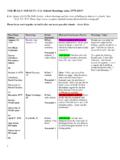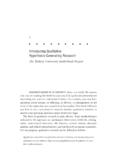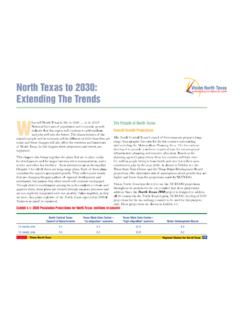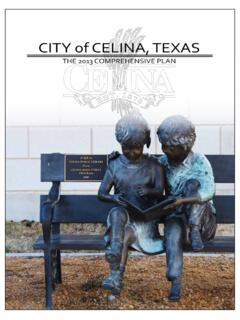Transcription of Acculturation, Enculturation, Assimilation, and ...
1 11 From Melting Pot to Simmering StewAcculturation, enculturation , assimilation , and biculturalism in American Racial DynamicsOn January 20, 2009, Barack Obama was sworn in as the forty-fourth president of the United States. Although he was heralded as the first African American to serve in the highest and most powerful position in the nation (and perhaps in the world), President Obama s cultural heritage was more subtle and complex. He was born in Honolulu, Hawaii, to an American mother, Stanley Ann Dunham, whose family (in Wichita, Kan-sas) was primarily of English descent, and Barack Obama Sr., a Luo from Nyang oma Kogelo, Nyanza Province, Kenya. His father and mother mar-ried in 1961 and divorced in 1964, after which his father returned to Kenya. After her divorce, Dunham married Indonesian student Lolo Soetoro. In 1967 they moved the family to Indonesia, where Barack attended schools in Jakarta from ages six to ten.
2 He finished his schooling (grades five to twelve) in Honolulu while living with his maternal grandparents. Thus, not only was Obama of mixed race, but he also grew up in a state where more than 25 percent of the population reports a heritage of two or more races. The multicultural environment in Hawaii influenced his cultural perspec-tive. Obama wrote,That my father looked nothing like the people around me that he was black as pitch, my mother white as milk barely registered in my mind.. The opportunity that Hawaii offered to experience a variety of cul-tures in a climate of mutual respect became an integral part of my world view, and a basis for the values that I hold most dear. (Obama 1995) This mixed-race heritage and multicultural childhood provided the foundation for Obama to become the first biracial and bicultural presi-dent. His campaign appealed to young voters and minorities.
3 Overall, 68 110/27/10 1:25:23 PM2 From Melting Pot to Simmering Stewpercent of voters between the ages of eighteen and twenty-nine years cast their ballots for Obama, versus 30 percent of that age group who supported John McCain (Hebel 2008). Fifty-two percent of the 30- to 44-year-olds supported Obama. Final exit-poll tallies indicated that Obama won the Asian American vote 62 percent to 35 percent, the Latino vote 67 percent to 31 percent, and the African American vote 90 percent to 10 percent (Chen 2009). Certainly, Obama s biracial heritage and multicultural skills catalyzed a trend among younger generations and allowed him to connect with diverse groups of voters. He is widely praised for his ability to listen to many perspectives and seek common ground in making decisions. Further raising the visibility of biculturalism in the United States, Sonia Sotomayor was confirmed by the United States Senate on August 6, 2009, as the first Latina Supreme Court justice.
4 Sotomayor was born in the Bronx, a borough of New York City, to Juan Sotomayor, who was from the area of Santurce, San Juan, Puerto Rico, and Celina B ez from Santa Rosa in Lajas, a rural area on Puerto Rico s southwest coast. Spanish was her first lan-guage and her family regularly visited Puerto Rico to see relatives during the summers. Sotomayor became fluent in English later in childhood, and was inspired to pursue a legal career through reading Nancy Drew novels and watching Perry Mason on television. The life stories of Obama and Sotomayor encapsulate many of the themes in bicultural development. Both of these individuals grew up in ra-cially diverse environments with meager resources and single parents who were determined to get their children ahead through education and hard work. Obama and Sotomayor both struggled through a process of cul-tural identity development, but eventually were able to navigate within and across complex institutional settings, engaging disparate groups of people with their sophisticated communication skills and insight into complicated social issues.
5 Having succeeded in meeting the many challenges inherent in the acculturation process ( , learning new languages, coping with dis-crimination, adopting norms and behaviors to meet the needs of differ-ent cultural situations), Obama and Sotomayor serve as examples of the twenty-first-century bicultural American Dream that is characterized by maintaining one s cultural roots while successfully meeting the demands of the larger sociocultural system. Although Barack Obama and Sonia Sotomayor are currently two of the most famous biracial, bicultural people in the United States, they repre-sent millions of other bicultural people. Census data from 2000 show that percent of whites; percent of African Americans, American In-dian/Alaskan Natives, and Asians; percent of Native Hawaiian/Pacific Islanders; and percent of people reporting other racial heritages claim a 210/27/10 1:25:23 PMFrom Melting Pot to Simmering Stew 3heritage of more than one racial group ( Census Bureau 2007).
6 These percentages sum to 14,168,760 people in the United States who claim a mixed racial heritage (5,470,349 combination with white; 1,761,244 com-bination with African American; 1,643,345 combination with American Indian/Alaskan Native; 1,655,830 combination with Asian; 475,579 combi-nation with Native Hawaiian/Pacific Islander; and 3,162,413 combination with some other race). Moreover, these numbers include only those indi-viduals who report biracial heritage. Many people may be bicultural but not biracial. These people are likely to affiliate with one racial or ethnic group but adopt perspectives from both their minority cultural group and the larger host culture within the United States. Given that nineteen mil-lion immigrants obtained legal resident status from 1990 to 2008 and ap-proximately twelve million undocumented immigrants are trying to adjust to life within the cultural system (Department of Homeland Security 2008), it is clear that becoming bicultural is a common theme for many people throughout the United Change in the United StatesThe racial and ethnic makeup of the has changed more rapidly since 1965 than during any other period in history.
7 The reform in immigration policy of 1965, the increase in self-identification by ethnic minorities, and the slowing of the country s birth rates, especially among non-Hispanic White Americans, have all led to an increasing, and increasingly diverse, racial and ethnic minority population in the United States. ( Depart-ment of Health and Human Services 2001, 56)As the surgeon general s report Mental Health: Culture, Race, and Ethnicity cited above indicates, the United States is currently experiencing the larg-est growth of racial and ethnic minority populations in its history (see also Suarez- Orozco and Suarez-Orozco 2001). As shown in figure , during the eighteen years between 1990 and 2008, nearly nineteen million immigrants obtained legal resident status in the United States. The only other decade that approaches the highest immigration rates from 1990 2000 (9,775,398) or 2000 2008 (9,168,612) was at the turn of the twentieth century, when 8,202,388 immigrants obtained legal resident status from 1900 to 1910.
8 National statistics illustrate dramatic demographic changes. In July 2006, the minority population reached million, which equates to one in three residents of the nation having minority status ( Census Bureau 2007a). The nation s overall minority population on July 1, 2008, was 310/27/10 1:25:23 PM4 From Melting Pot to Simmering Stewmillion or 34 percent of the total population ( Census Bureau 2009). Hispanics or Latinos are the largest and fastest-growing minority group, which reached million in 2008, an increase of percent from 2007. In 2008, nearly one in six residents was Hispanic. Asians were the sec-ond fastest-growing minority group from 2007 to 2008, increasing by percent to million persons in 2008. Following the Asian population in growth were Native Hawaiians and other Pacific Islanders (increasing percent to million), American Indians and Alaska Natives (increasing percent to million) and blacks or African Americans (increasing percent to million).
9 In 2008, million people were recorded as be-ing biracial or multiracial, which was a percent increase from 2007. The population of non-Hispanic whites who indicated no other race showed the smallest growth, increasing by percent to million. Table highlights United States demographic shifts from 2000 to 2008 by race and ethnicity ( Census Bureau 2009). Dynamic demographic changes are occurring across the nation, specifi-cally in the majority-minority balance. A population is defined as having majority-minority status when more than half the population is a group other than single-race, non-Hispanic whites. The most recent report on the shift in the majority-minority status of counties, issued by the Census Bureau in 2009, showed that as of July 1, 2008, nearly 10 percent (309) of the nation s 3,142 counties were majority-minority status; of that total, 56 have become majority-minority status since April 1, 2000.
10 Taking a wider perspective, four states had majority-minority status in 2008: Hawaii (75 Fig. Immigrants obtaining permanent legal resident status, 1820 2008 ( Department of Homeland Secu-rity 2008) 410/27/10 1:25:23 PMFrom Melting Pot to Simmering Stew 5percent), New Mexico (58 percent), California (58 percent), and Texas (53 percent). The District of Columbia was 67 percent minority. No other state had more than a 43 percent minority population. The Pew Research Center estimates that by 2050, Latinos will make up nearly one-third of the population and that non-Latino whites will become a minority constituting 47 percent of the population. African Americans will continue to make up 13 percent of the population, and the percentage of Asian/Pacific Islanders will increase from 5 percent in 2005 to 9 percent in 2050. Foreign-born immigrants will rise from 12 percent of the population in 2005 to 19 percent in 2050.







